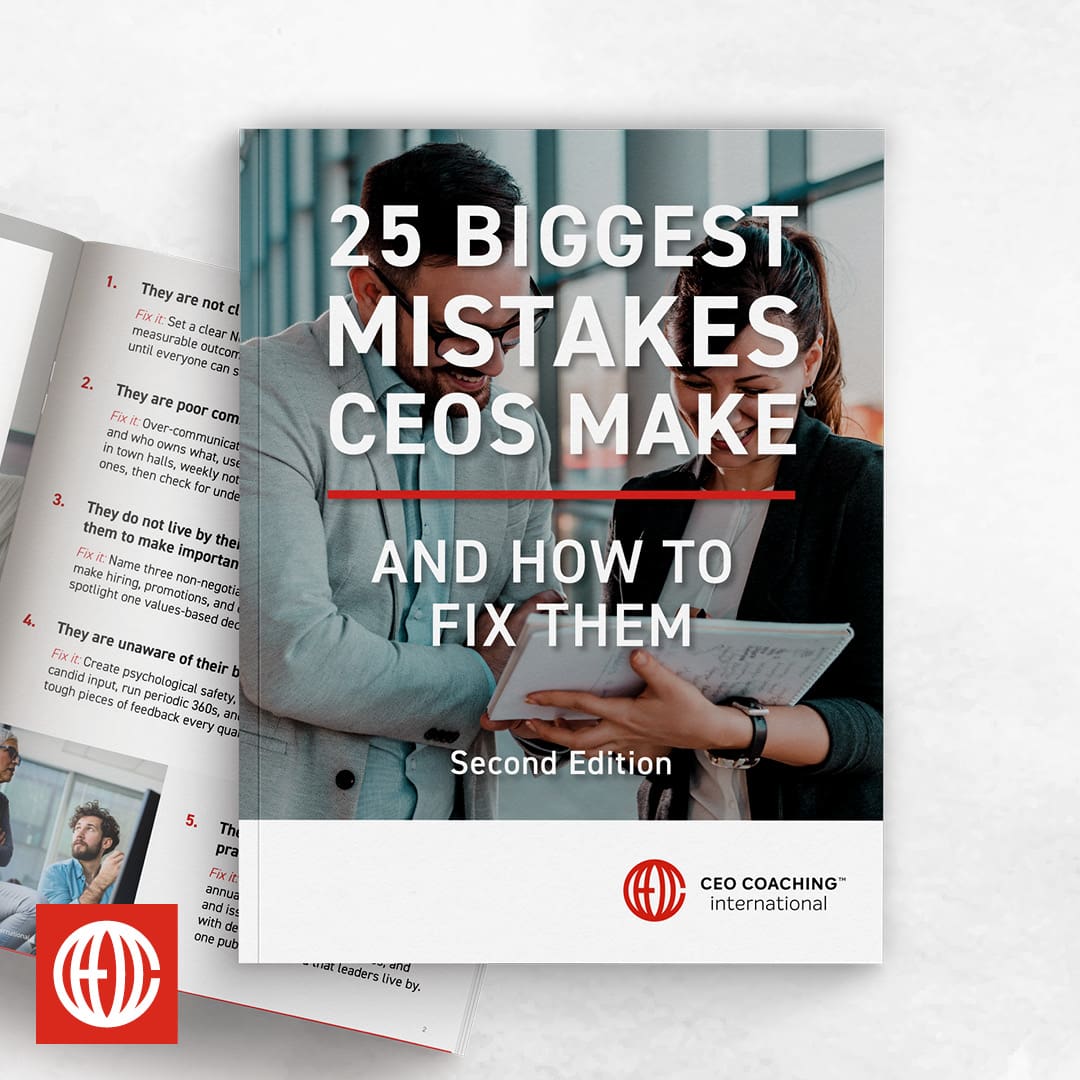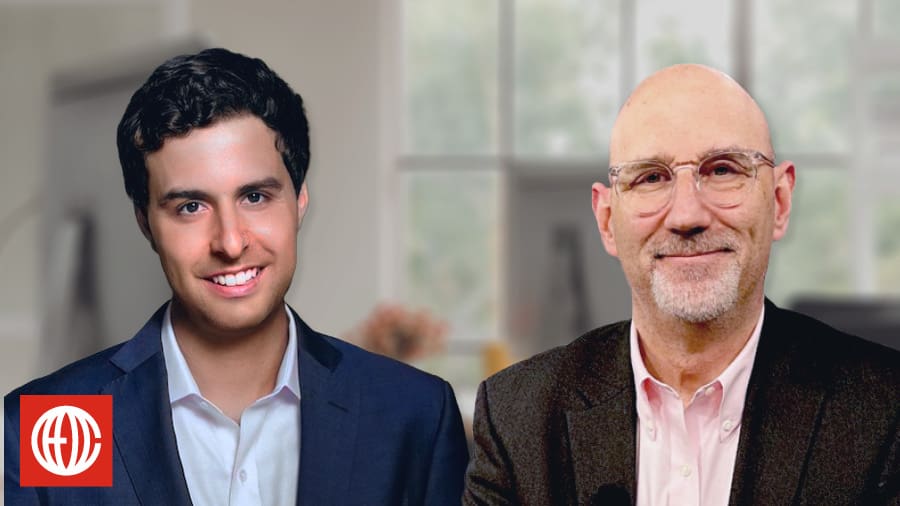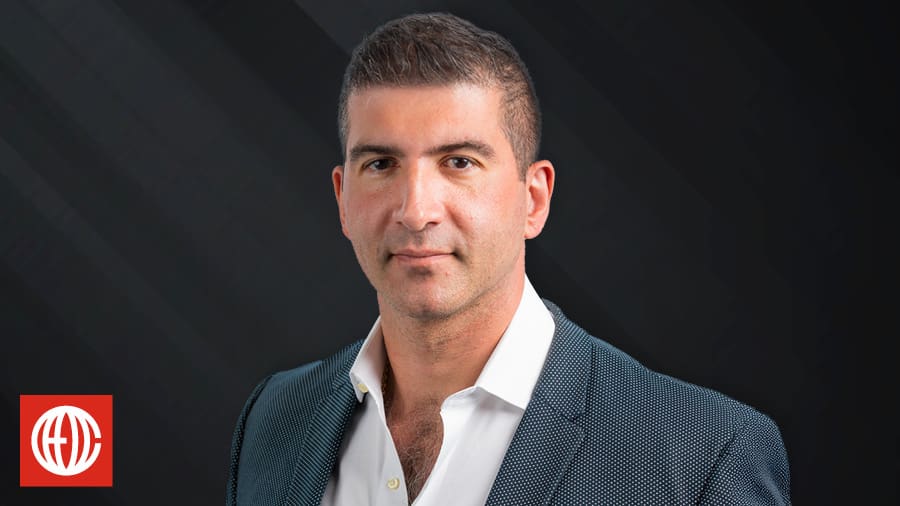25 Mistakes CEOs Make and How to Fix Them – Second Edition
CEOs deal with massive change and cope with stressful situations every day. On top of that, there is an expectation that strong leaders have all the answers, know what to do, and can handle challenges alone. The truth is: That’s a false expectation.
Executive Coaching
Blog & Insights

DON’T FALL FOR THESE CEO MISTAKES

The 7 Books Every CEO Must Read in 2026 to Lead in a World of Risk, AI, and Rapid Change
The 7 Books Every CEO Must Read in 2026 to Lead in a World of Risk, AI, and Rapid Change As we head into a new year and wrap up annual planning season, every CEO is thinking about AI, talent, and economic uncertainty. But those are table stakes. If you want to set yourself and […]
Read more
The New CEO Reset: Breaking Your Old Habits So Your Company Can Grow in 2026
If you want to Make BIG Happen in 2026, then before you step into your annual planning session, you have to confront the one question that will reframe everything about your company and your performance as CEO: What if the biggest obstacle to your company’s growth next year is your own outdated habits?
Read more
Your Multi-Million Dollar Liquidity Event is Coming — Here’s What You Should Do with Saman Samii and Mitch Slater of UBS Wealth Management
Saman Samii and Mitch Slater discuss how to prepare yourself emotionally, financially, and structurally for a BIG exit.
Read more
Preparing Your 2026 Annual Planning Meeting Agenda, Part II
Consider this your blueprint for redesigning the resilient new business you’ve envisioned during your 2026 annual planning.
Read more
The CEO’s Guide to SEO, AEO, and Humanizing Your Digital Marketing with GreenBanana SEO Founder Kevin Roy
Kevin Roy explains how the rise of AI and large language models is transforming the way that businesses Make BIG Happen.
Read more
Preparing Your 2026 Annual Planning Meeting Agenda, Part I
Part I: Building Intelligence, Agility, and Resilience 2026 will test how adaptable and imaginative you and your leadership team really are. Between AI disruption, economic uncertainty, and geopolitical tension, the winners won’t be those who predict the future perfectly, but those who prepare for multiple versions of it. Sometimes CEOs use the phrases “annual plan” […]
Read more
How CEOs Can Win in a Two-Speed Economy: Thriving When Half of Consumer Spending Comes from the Top 10%
How CEOs Can Win in a Two-Speed Economy: Thriving When Half of Consumer Spending Comes from the Top 10% Most CEOs have a playbook for maintaining growth when their customers are either spending more or spending less. But what about when both are happening at the same time? According to a recent Moody’s Analytics estimate, […]
Read more
Why Cash Flow Can Make or Break Your Growth Strategy
When you first engage with a coach here at CEO Coaching, they’ll tell you that top CEOs focus on only five things: Vision, cash, people, key relationships, and continuous learning. All of those areas are important for your business to grow. But ask our top coaches and they’ll tell you that it’s cash flow that often holds teams back from BIG growth.
Read more
Tax Strategy for Entrepreneurs: 4 Smart Ways to Keep More of What You Earn
Tax season doesn’t have to mean losing a third of your earnings. Here are four smart strategies from Carson Wealth’s Paul West to help entrepreneurs take control of their wealth and legacy.
Read more
Dr. Mario Simon on How Great CEOs Turn Self-Awareness Into Business Mastery
CEO Coaching Int’l Guest: Dr. Mario Simon, a coach at CEO Coaching International. Mario is a transformational leader who has a global track record of building companies and helping CEOs unlock breakthrough growth and cultural impact. Quick Background: If you want to 10X your company, start by 10Xing the one indispensable resource that drives everything: […]
Read more
Former ChangeMakers CEO and Boston Consulting Group Partner Joins CEO Coaching International as Partner and Coach
CEO Coaching International is pleased to announce Dr. Mario Simon as its newest Partner and Coach. Simon is a transformational leader and executive coach with a global track record of helping CEOs unlock breakthrough growth and lasting cultural impact. With over two decades at the helm of some of the world’s most influential consulting, marketing, and wellness organizations, Simon has built a reputation for reimagining businesses, energizing leadership teams, and guiding organizations through complex transitions.
Read more
David Desharnais On Driving Your Company from Stagnation to Breakout Growth
David Desharnais discusses how CEOs can break out of stagnation and accelerate their growth, as well as how to build a Jim Collins flywheel.
Read moreFilters